Bunion Surgery
Experience premier Bunion Surgery at Luxe Foot Surgery. Our specialized team of experts provides comprehensive and customized treatment plans, leveraging advanced surgical techniques. Not only do we alleviate your bunion discomfort, but we also address the root cause, ensuring a long-term solution for your foot health.
- Updated on: January 15, 2024
AVERAGE COST
$8,000
PROCEDURE TIME
20 – 40 Min
BACK TO WORK
4 to 6 week
FULL RECOVERY
3 to 6 months weeks
Book Your Free Consultation
Bunion Surgeries at Luxe Foot Surgery.
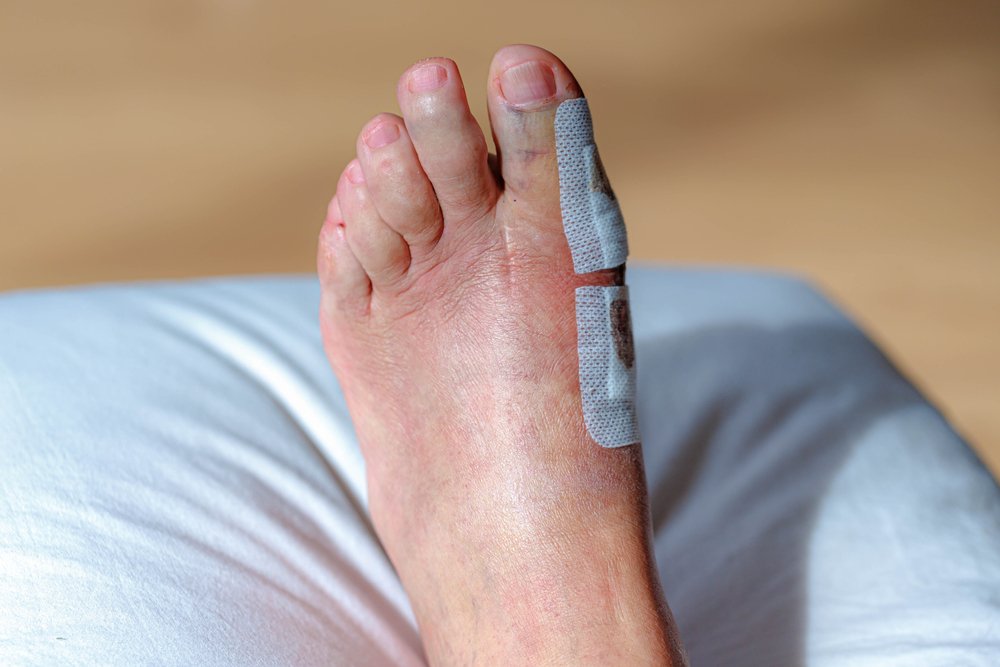
Minimally Invasive Bunion Surgery
Experience less scarring and faster recovery with our Minimally Invasive Bunion Surgery. Get back on your feet quickly. Book your consultation now.

Bunion Revision Surgery
Enhance the results of previous bunion surgery with our specialized Bunion Revision Surgery. Correct any lingering issues and restore comfort and mobility.
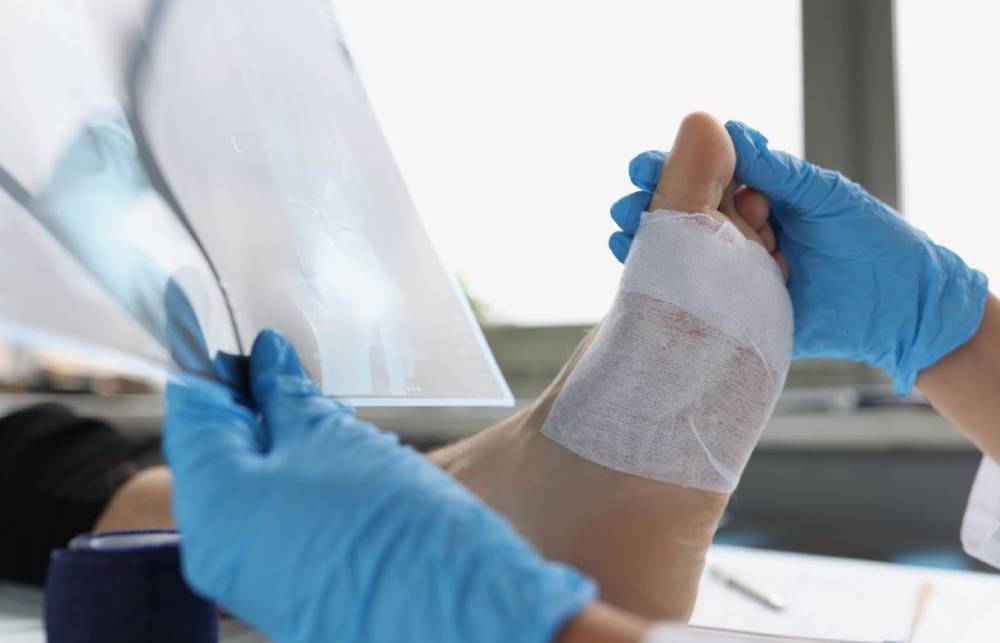
Tailor Bunion Surgery
Get relief from the pain and discomfort of tailor bunions with our specialized Tailor Bunion Surgery. Regain comfort and restore proper foot function.
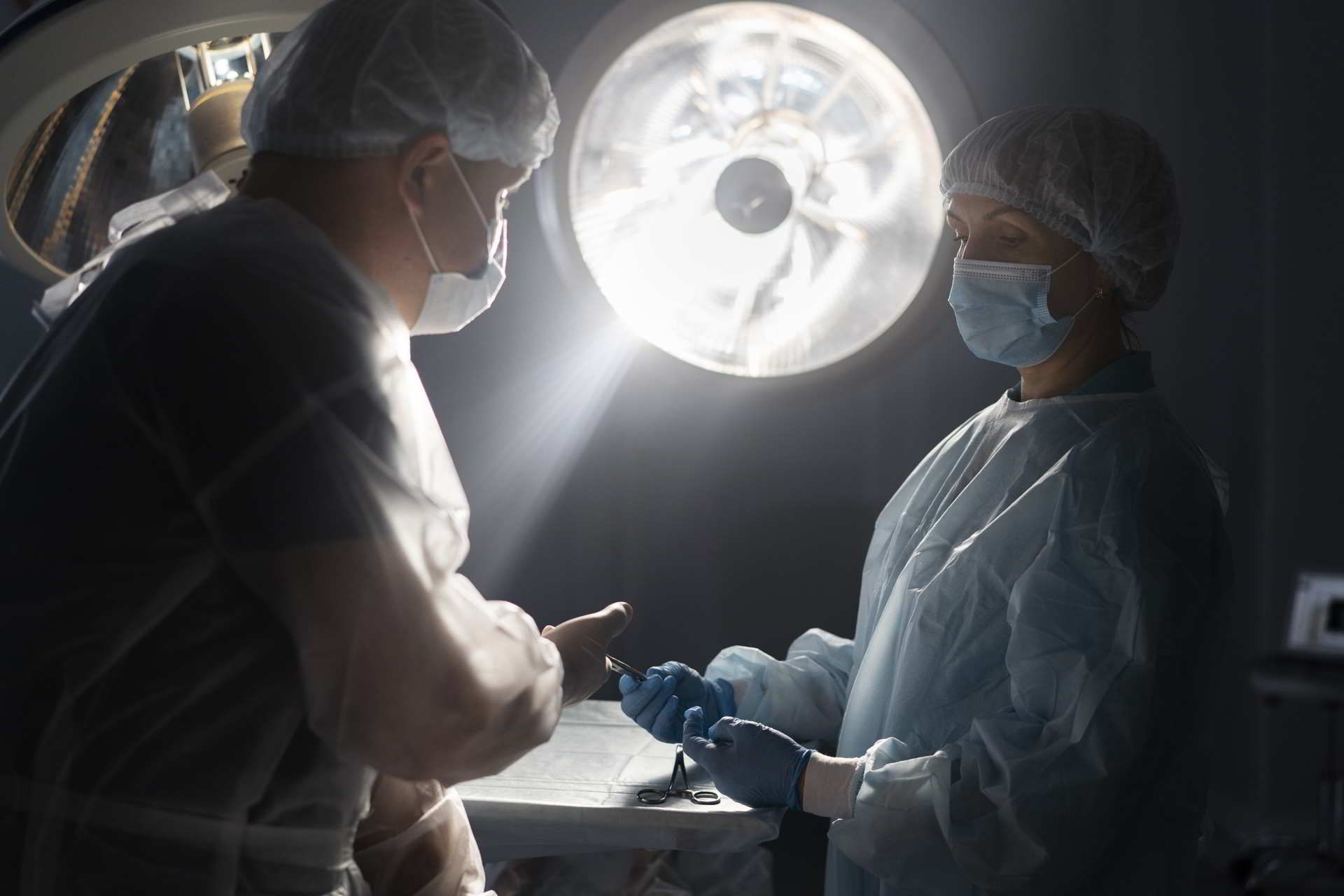
Hallux Rigidus Surgery
Regain mobility and alleviate pain caused by Hallux Rigidus with our effective Hallux Rigidus Surgery. Restore function to your big toe joint and get back to your active lifestyle.

What Is the Bunion Surgery?
Bunion surgery, also known as a bunionectomy, is a procedure designed to correct the deformity of the joint at the base of the big toe. This deformity, known as a bunion, occurs when the big toe pushes against the next toe, causing the joint of the big toe to get bigger and stick out. Over time, this can cause significant pain and discomfort, especially while walking or wearing shoes.
Bunion surgery aims to realign the bone, ligaments, tendons, and nerves so that the big toe can be brought back to its correct position. There are several types of bunion surgery, each tailored to the severity of the bunion and the patient’s overall health and lifestyle. The surgery can involve removing or realigning soft tissue and bone to reduce pain and restore normal alignment to the toe joint.
The objective of bunion surgery is not just cosmetic. It also aims to reduce pain and improve foot function. However, surgery is typically considered only after non-surgical treatments, such as wearing more comfortable shoes, orthotics, or anti-inflammatory medications, have not provided adequate relief from symptoms.
Types of bunion surgery
Bunion surgery is not one-size-fits-all. The type of surgery performed is determined by the severity of the bunion, the patient’s lifestyle, overall health, and the patient’s individual foot anatomy. Here are several commonly performed types of bunion surgery:
Osteotomy: This procedure involves making small cuts in the bones to realign the joint and remove the bunion. The bones are then fixed in place with screws or pins. This is the most common type of bunion surgery.
Exostectomy: Also known as bunionectomy, this procedure involves simply removing the bunion from the joint without performing any further alignment. It is seldom used alone because it doesn’t correct the underlying structural problem.
Arthrodesis: This type of surgery is generally reserved for severe bunions or for those that have not been successfully corrected by other surgeries. It involves removing the arthritic joint surfaces, then using screws, wires, or plates to hold the surfaces together until they heal.
Resection Arthroplasty: In this procedure, the surgeon removes the damaged portion of the joint to allow more space between the bones. This surgery is typically reserved for older patients, those who have had previous unsuccessful bunion surgery, or those with severe arthritis.
Lapidus Procedure: This procedure is often used for severe bunions. It involves fusing the joint where the first metatarsal bone connects to the midfoot, effectively realigning the entire metatarsal instead of just its top.
Minimally Invasive Bunion Surgery: This technique involves making small incisions to correct the bunion. This surgery generally results in less post-operative discomfort, quicker recovery time, and smaller scars.
These are just some of the many options available for bunion surgery. It’s important to discuss with your doctor at Luxe Foot Surgery in Miami to determine which type of bunion surgery is best for you, given your unique foot anatomy and lifestyle.
How Much Does Bunion Surgery Cost in US?
The average cost of bunion surgery in the United States typically falls between $3,000 and $7,000. This price range reflects the expert surgical care and advanced techniques used to provide patients with relief from foot pain and improved mobility. It’s essential to note that the actual cost can vary depending on the patient’s unique needs and any additional post-operative care required.
Procedure | Average Cost in the US |
|---|---|
| Tailor’s Bunion Surgery | $2,500 to $7,000 |
| Laser Bunion Surgery | $5,000 to $10,000 |
| Bunion Revision Surgery | $5,000 to $10,000 |
| Minimally Invasive Bunion Surgery | $4,000 to $8,000 |
Bunion Surgery Cost in Miami
In Miami, the cost of bunion surgery typically ranges from $2,500 to $5,000 per foot. This price variation reflects factors such as the complexity of the procedure, the surgeon’s expertise, and the level of post-operative care required. At Luxe Foot Surgery, we’re committed to offering top-tier care at competitive prices. Therefore, our bunion surgery procedures start at $2,500, ensuring patients in Miami have access to superior foot care that’s also affordable.
Procedure | Average Cost in Miami |
|---|---|
| Tailor’s Bunion Surgery | $2,500 to $5,000 |
| Laser Bunion Surgery | $3,000 to $5,000 |
| Bunion Revision Surgery | $2,500 to $3,500 |
| Minimally Invasive Bunion Surgery | $4,000 to $5,000 |
Costs After Bunion Surgery
The total cost of bunion surgery also includes post-operative expenses that are essential for recovery and successful results. Some of the most common costs after bunion surgery include:
- Medications: Prescriptions for pain relief and anti-inflammatory drugs are common post-surgery and vary in cost based on the specific medication, dosage, and duration of use.
- Follow-up visits: Regular follow-ups with the surgeon are crucial to monitor healing progress and address any potential complications. These visits are usually factored into the total surgery cost, but it’s always best to confirm with your healthcare provider.
- Physical therapy: Physical therapy is often recommended to restore strength and mobility to the foot. The cost of physical therapy sessions can depend on the frequency and duration of therapy needed.
- Special footwear: Post-surgery, patients may need to wear a surgical shoe or boot to protect the foot during recovery. There may also be the need for custom orthotics after healing.
- Imaging tests: In some cases, additional X-rays or other imaging may be necessary after surgery to check the healing progress.
Insurance typically covers a portion of these costs, but the specific amount covered can vary significantly depending on the patient’s insurance plan. It’s always recommended to confirm these details with your insurance provider and healthcare facility before undergoing surgery.
Is bunion surgery typically covered by health insurance plans?
Bunion surgery may be covered by insurance, but the extent of coverage can vary depending on several factors, including your insurance provider, specific plan, and the medical necessity of the procedure. Here are some points to consider:
Insurance Coverage: Many health insurance plans offer coverage for medically necessary bunion surgery. However, the specific coverage details, such as the percentage covered and any deductibles or co-pays, can vary widely. It’s important to review your insurance policy or contact your insurance provider directly to understand the coverage specifics.
Medical Necessity: Insurance coverage for bunion surgery often depends on the medical necessity of the procedure. If the bunion is causing severe pain, hindering mobility, or leading to other complications, it is more likely to be considered medically necessary and covered by insurance.
Pre-authorization and Documentation: Insurance providers often require pre-authorization for surgeries. Your healthcare provider will need to submit appropriate documentation, including medical records, X-rays, and any other relevant information, to support the medical necessity of the surgery.
Out-of-Network Providers: If you choose to have bunion surgery with a provider who is out-of-network for your insurance plan, coverage may be limited or not covered at all. It’s important to check with your insurance provider regarding their out-of-network coverage policies.
Cosmetic Considerations: In cases where the primary reason for surgery is cosmetic rather than medical, insurance coverage may be more limited or may not be covered at all. It’s important to discuss this aspect with your healthcare provider and insurance provider to understand the potential coverage in such situations.
To determine the specific coverage for bunion surgery under your insurance plan, it’s recommended to reach out to your insurance provider directly. They can provide you with the most accurate and up-to-date information regarding coverage, pre-authorization requirements, and any out-of-pocket costs you may incur.
Bunion Surgery Recovery: Tips, Timeframe and Pain
Bunion surgery recovery can vary widely based on the specific procedure performed, the patient’s overall health, and how well the patient adheres to the post-operative care plan. However, here are some general tips and timeframes to consider:
Tips for Bunion Surgery Recovery:
Follow Your Surgeon’s Instructions: This might seem obvious, but it’s essential. Your surgeon knows your situation best, so always follow their specific recommendations for post-operative care.
Rest and Elevate: Especially in the first few weeks, make sure to get plenty of rest and keep your foot elevated as much as possible to reduce swelling.
Ice Your Foot: Applying an ice pack (wrapped in a towel to protect your skin) to your foot can also help reduce swelling and alleviate pain.
Wear Appropriate Footwear: Your surgeon may recommend a special post-surgical shoe or boot to protect your foot and keep it in the correct position as it heals.
Physical Therapy: Depending on your specific situation, physical therapy exercises may be recommended to help strengthen your foot and improve flexibility.
Healthy Diet: Eating a balanced diet rich in protein, vitamins, and minerals can aid your body in healing.
No Smoking: Smoking can hinder your recovery process as it restricts blood flow, making it harder for your body to heal.
Timeframe for Recovery
Short-term recovery: The initial recovery period typically lasts for 6 to 8 weeks. During this time, patients should expect to experience some level of discomfort, swelling, and limited mobility. You may need to use crutches or a walker initially to avoid putting weight on the foot.
Long-term recovery: Full recovery can take anywhere from 3 to 6 months, and in some cases up to a year. This is the time it takes for swelling to completely resolve and strength to return to normal.
Remember, it’s normal to have some discomfort and limited mobility after bunion surgery. However, if you experience severe pain, excessive swelling, or other worrying symptoms, make sure to contact your healthcare provider immediately. At Luxe Foot Surgery in Miami, we’re committed to supporting our patients through every step of the recovery process, ensuring the best possible outcomes from bunion surgery.
Managing Pain After Bunion Surgery
Pain after bunion surgery is normal as your body responds to the trauma of surgery and begins the healing process. The severity and duration of post-operative pain can vary greatly depending on the specifics of the surgery, your individual pain tolerance, and how well you adhere to post-surgical care instructions.
During the first few days after surgery, you can expect moderate to severe pain. This can be managed effectively with pain medications prescribed by your surgeon. Over time, this acute pain should gradually diminish.
Here are a few tips to manage pain after bunion surgery:
Medication: Your surgeon will likely prescribe pain relief medication. It’s essential to take these as directed to manage discomfort effectively.
Elevation: Keeping your foot elevated above the level of your heart as much as possible can help to reduce swelling and, in turn, alleviate pain.
Ice: Applying ice to your foot can help to numb the area and reduce inflammation. Always wrap ice packs in a towel before applying to avoid skin damage.
Rest: Ensure you get plenty of rest. This will help your body to heal and can reduce the length of time you experience pain.
Physical Therapy: As your recovery progresses, gentle exercises recommended by a physical therapist can help to reduce stiffness and improve strength and mobility, which can also help to reduce pain over time.
What Symptoms Indicate That It's Time for Bunion Surgery?
Bunion surgery is often considered when conservative treatments fail to relieve symptoms and the condition starts to significantly affect your quality of life. Here are some symptoms that might indicate it’s time to consider bunion surgery:
Persistent Pain: If your bunion pain is constant or intense enough to limit your daily activities, including walking and wearing shoes, it might be time to consider surgery.
Foot Deformity: A visible bump on your foot that continues to grow despite non-surgical interventions could warrant surgical intervention.
Toe Stiffness: If you’re unable to move your big toe, or it starts to cross over your second toe, surgery may be required to restore its function.
Non-Responsive to Non-Surgical Treatments: If treatments like changing footwear, using orthotic devices, and taking anti-inflammatory medications aren’t reducing your symptoms, surgical intervention might be the next step.
Inflammation and Swelling: Chronic inflammation and swelling that doesn’t improve with rest or medications can indicate a need for surgery.
Difficulty Walking: If your bunion is causing a significant change in your walking pattern or if you’re starting to favor one foot over the other, this could be a sign that surgery is needed.
It’s important to remember that the decision to undergo bunion surgery should be made in consultation with a skilled podiatric surgeon. At Luxe Foot Surgery in Miami, our team is committed to guiding patients through this decision, helping them understand the benefits and risks of surgery and providing personalized treatment plans.
What are the common causes of bunions?
A bunion, also known as hallux valgus, is primarily caused by an imbalance in the foot’s structure and mechanics. The exact cause of bunions is not fully understood, but several factors can contribute to their development:
Genetics: Certain foot types and structural abnormalities that are inherited can make individuals more prone to developing bunions.
Footwear: Wearing shoes that are too tight, narrow, or high-heeled can increase the risk of developing bunions. Such footwear puts pressure on the toes, pushing them out of their natural alignment over time.
Foot Mechanics: Abnormal foot mechanics, such as overpronation (excessive inward rolling of the foot) or flat feet, can contribute to the development of bunions. These issues can put additional stress on the big toe joint.
Joint Injuries or Conditions: Previous injuries to the foot or certain conditions, such as rheumatoid arthritis, can increase the likelihood of developing bunions.
Hormonal Factors: Hormonal imbalances, particularly in women, may play a role in bunion formation. Bunions are more common in women, possibly due to hormonal changes and the types of footwear typically worn.
It’s important to note that while factors like footwear and foot mechanics can exacerbate bunions, they are not the sole cause. Bunions often develop gradually over time due to a combination of these contributing factors. If you suspect you have a bunion or are experiencing foot discomfort, it’s advisable to consult with a qualified healthcare professional or podiatrist for an accurate diagnosis and appropriate treatment options.
Discover the Transformative Benefits of Bunion Surgery
Bunion surgery offers several potential benefits for individuals suffering from bunion-related pain and deformity. These benefits include:
- Pain Relief: Bunion surgery aims to alleviate pain and discomfort caused by the bunion deformity. By correcting the underlying structural issues and realigning the bones and joints, surgery can provide significant pain relief.
- Improved Mobility: Bunions can restrict normal foot movement, making walking and engaging in physical activities challenging. Bunion surgery can restore proper foot mechanics, allowing for improved mobility and a more active lifestyle.
- Correction of Deformity: Bunion surgery addresses the cosmetic aspect of the bunion by realigning the bones, reducing the prominence of the bony bump, and restoring a more natural appearance to the foot.
- Prevention of Further Damage: Untreated bunions can lead to progressive deformity and additional foot problems over time. Bunion surgery can help prevent the progression of the condition, reducing the risk of developing related issues such as hammertoes, corns, and calluses.
- Improved Foot Function: Bunion surgery aims to restore proper foot alignment and function. This can improve weight distribution, balance, and overall foot mechanics, leading to improved comfort and functionality in daily activities.
- Enhanced Quality of Life: By reducing pain, improving mobility, and correcting deformity, bunion surgery can significantly enhance an individual’s quality of life. It allows individuals to engage in activities they previously avoided due to pain or discomfort and restores confidence in the appearance of their feet.
It’s important to note that the specific benefits of bunion surgery can vary depending on the individual case and the surgical technique used. Consulting with a qualified healthcare professional or foot specialist is crucial to assess your specific condition and determine the potential benefits and risks of bunion surgery for your situation.
Pros and Cons of Bunion Surgery
Pros of Bunion Surgery:
- Pain Relief: Bunion surgery can provide significant relief from the pain and discomfort associated with bunions, allowing individuals to regain their mobility and engage in daily activities more comfortably.
- Improved Foot Function: By realigning the bones and correcting the deformity, bunion surgery can improve foot function, balance, and overall mechanics, enhancing mobility and preventing further foot problems.
- Cosmetic Improvement: Bunion surgery can improve the appearance of the foot by reducing the prominence of the bunion, restoring a more natural shape and alignment.
- Prevention of Progression: Bunion surgery can halt the progression of the bunion deformity, preventing the condition from getting worse and reducing the risk of developing related foot problems.
- Enhanced Quality of Life: Bunion surgery can have a positive impact on a person’s overall quality of life, enabling them to participate in activities that were once limited by pain or discomfort and boosting self-confidence.
Cons of Bunion Surgery:
- Surgical Risks: As with any surgery, there are inherent risks involved, such as infection, bleeding, nerve damage, or poor wound healing. However, these risks are generally low when performed by an experienced surgeon.
- Recovery Time: Bunion surgery requires a period of recovery, during which mobility may be limited and daily activities may need to be adjusted. Recovery time can vary depending on the extent of the surgery and individual healing abilities.
- Potential for Recurrence: In some cases, bunions may recur after surgery, particularly if the underlying structural issues are not adequately addressed or if proper post-operative care is not followed.
- Post-Surgical Discomfort: While bunion surgery aims to alleviate pain, there can be temporary discomfort during the healing process. Swelling, bruising, and stiffness are common in the initial stages of recovery.
- Cost: Bunion surgery can be expensive, especially without insurance coverage. The cost includes the surgical procedure, post-operative care, and potential additional expenses like physical therapy.
It’s important to discuss the potential risks and benefits of bunion surgery with a qualified healthcare professional or foot specialist to make an informed decision based on your individual circumstances and preferences.
Schedule a Consultation for Bunion Surgery at Luxe Foot Surgery in Miami
Book a consultation at Luxe Foot Surgery in Miami to discuss your bunion surgery. Our experienced team, led by Dr. Lopez DPM, will guide you through the process, explaining the benefits and risks of the procedure. We prioritize open communication and patient satisfaction, ensuring you receive the highest level of care. Contact us to schedule your consultation and take a step towards improved foot health.
Frequently asked questions
While nerve damage after bunion surgery is not common, it is a potential complication. If it does occur, symptoms can include:
Numbness or Tingling: A feeling of “pins and needles,” numbness, or tingling in the foot or toes can indicate nerve damage.
Pain: Sharp, shooting, or burning pain can occur. This pain may be constant, or it may come and go.
Sensitivity: The area may become excessively sensitive to touch or temperature changes.
Weakness: You might experience weakness or a loss of muscle strength in the foot.
Loss of Coordination: Difficulty with balance or a lack of coordination while walking could also be a sign.
Changes in Sweating: You may notice an increase or decrease in sweating in the affected foot.
If you experience any of these symptoms after bunion surgery, it’s important to consult with your healthcare provider promptly. They can assess your symptoms, determine whether nerve damage may be present, and recommend appropriate treatment options.
At Luxe Foot Surgery in Miami, our highly skilled team prioritizes patient safety and works diligently to minimize the risk of complications, including nerve damage. After surgery, we closely monitor our patients’ recovery to ensure any potential issues are addressed as quickly and effectively as possible.
After bunion surgery, patients can expect several normal post-operative symptoms as part of the healing process. These can include:
Pain and Discomfort: Pain is expected following bunion surgery and can be managed with prescribed pain relief medications.
Swelling: It’s normal to experience swelling in the foot following surgery. This can be managed with rest, ice, compression, and elevation (RICE).
Bruising: Some bruising is normal and should fade over time.
Limited Mobility: Immediately after surgery, movement will be limited. Over time, and with recommended physical therapy exercises, mobility will improve.
Numbness or Tingling: Temporary numbness or tingling around the surgical site is common as the nerves recover from the surgery.
However, there are also some symptoms that are not expected and could indicate a complication. These can include:
Severe Pain: While some pain is normal, severe pain or pain that gets worse instead of better should be reported to your healthcare provider immediately.
Redness, Warmth, or Drainage: These symptoms could indicate an infection and should be reported immediately.
Fever or Chills: A fever or chills could also indicate an infection.
Calf Pain or Swelling: This could be a sign of a blood clot, a serious condition that needs immediate medical attention.
If you experience any of these symptoms or are concerned about your recovery process, it’s important to contact your healthcare provider. At Luxe Foot Surgery in Miami, we provide comprehensive post-operative care and support to ensure a smooth and successful recovery process.
Three weeks after bunion surgery, you can expect to see some progress in your recovery. However, it’s important to note that individual healing timelines can vary. Here are some general expectations for what you might experience three weeks after bunion surgery:
Reduced Pain: By this time, you may experience a significant reduction in pain compared to the immediate post-operative period. However, some discomfort or mild pain may still be present, especially during movement or when putting weight on the foot.
Improved Mobility: You may be able to gradually increase your mobility and perform some light activities with caution. Walking with the aid of crutches or a walker might still be necessary, depending on your surgeon’s instructions.
Sutures or Staples Removal: Depending on your specific surgical approach, your surgeon may remove any sutures or staples at this stage. This process is typically quick and relatively painless.
Continued Swelling: Swelling can persist at this stage, but it should gradually decrease over time. Elevating your foot and using ice packs as directed by your surgeon can help reduce swelling.
Transitioning to a Regular Shoe: You may be able to transition from a surgical boot or cast to a more supportive shoe, depending on your surgeon’s guidance. Custom orthotic inserts or specialized footwear may still be necessary to provide proper support and alignment.
Physical Therapy: Your surgeon may recommend starting physical therapy to aid in restoring strength, flexibility, and range of motion in the foot. Physical therapy exercises will be tailored to your specific needs and should be performed under the guidance of a trained professional.
Remember, every patient’s recovery process is unique. It’s crucial to follow your surgeon’s instructions and attend any scheduled follow-up appointments. If you have any concerns or experience unexpected symptoms during this stage of recovery, consult with your healthcare provider for proper guidance and support.
After bunion surgery, it’s crucial to wear shoes that provide proper support, comfort, and protection for the healing foot. Here are some recommendations for shoes to wear six weeks after bunion surgery:
Wide and Roomy Shoes: Opt for shoes with a wide toe box that allows ample space for the toes to move freely without pressure. Avoid narrow or pointy-toed shoes that can squeeze the toes together and potentially aggravate the healing area.
Adjustable Closure Shoes: Look for shoes with adjustable closures like Velcro straps or laces. These allow you to customize the fit and accommodate any swelling or changes in foot size during the healing process.
Low Heel Height: Choose shoes with a low heel or no heel at all. High heels can place excessive pressure on the front of the foot and hinder the healing process. A supportive and cushioned flat shoe or a shoe with a small heel elevation (1 inch or less) is preferable.
Good Arch Support: Select shoes that provide adequate arch support to promote proper foot alignment and reduce strain on the foot. Shoes with removable insoles or orthotic inserts can offer additional support and comfort.
Cushioned and Shock-Absorbing Soles: Shoes with cushioned and shock-absorbing soles can help reduce impact and provide added comfort while walking.
Stability and Slip-Resistance: Look for shoes with good stability and slip-resistant soles to prevent accidental slips or falls during the recovery period.
Breathable Materials: Choose shoes made from breathable materials such as mesh or leather to promote airflow and reduce moisture buildup, which can help prevent discomfort and potential infections.
Remember to consult with your healthcare provider or surgeon for specific recommendations based on your individual healing progress and any additional considerations related to your surgery. They can provide personalized guidance on the appropriate type of footwear for your specific situation.
The amount of time off work needed after bunion surgery can vary depending on the specific procedure performed, the individual’s healing process, and the physical demands of their job. Here are some general guidelines:
Desk Job or Sedentary Work: If you have a sedentary job that primarily involves sitting and minimal physical activity, you may be able to return to work within a week or two after surgery. However, it’s important to keep in mind that you may still experience some discomfort and swelling during this time.
Moderate Physical Activity: If your job involves light to moderate physical activity or prolonged periods of standing, you may need to take approximately 2 to 4 weeks off work to allow for adequate healing and recovery. Your surgeon can provide specific recommendations based on your job requirements and individual healing progress.
Physically Demanding Job: If your job involves heavy lifting, extensive walking, or other physically demanding tasks, you may require a longer period of time off work. In such cases, it’s common to take 4 to 8 weeks or more to ensure sufficient healing and to avoid complications.
It’s essential to follow your surgeon’s advice regarding time off work, as they will consider various factors specific to your case. They can provide guidance based on your job requirements, the extent of the surgery, and your overall health. Taking the necessary time off work allows your foot to heal properly and minimizes the risk of complications or delays in recovery.
Remember, these are general guidelines, and individual recovery times can vary. It’s crucial to consult with your healthcare provider or surgeon for personalized advice based on your specific circumstances.
- American Academy of Orthopaedic Surgeons. (n.d.). Bunion Surgery. Retrieved from https://orthoinfo.aaos.org/en/treatment/bunion-surgery/
- Hospital for Special Surgery. (n.d.). Minimally Invasive Bunion Surgery. Retrieved from https://www.hss.edu/conditions_minimally-invasive-bunion-surgery.asp
- Cleveland Clinic. (n.d.). Bunion Correction Surgery. Retrieved from https://my.clevelandclinic.org/health/treatments/15383-bunion-correction-surgery
- WebMD. (n.d.). Understanding Bunions — Treatment. Retrieved from https://www.webmd.com/skin-problems-and-treatments/understanding-bunions-treatment
- Bunion Surgery Miami. (n.d.). Retrieved from https://bunionsurgerymiami.com/
Latest Articles
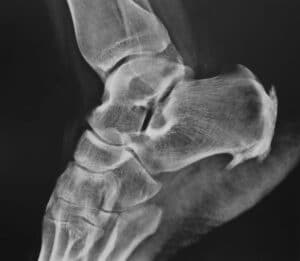
The Breakdown of Haglund’s Deformity Surgery Cost
Haglund’s deformity is a bony protrusion on the back of the heel. This podiatric condition is a result of calcaneus
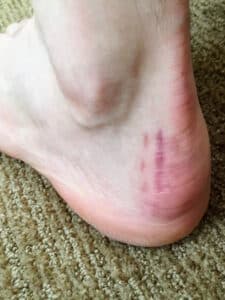
What to Expect – Haglund’s Deformity Surgery Scar
Haglund’s deformity or syndrome is a protrusion on the back of the heel caused by an enlargement of the calcaneal
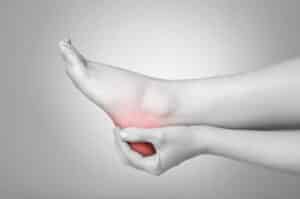
How Long Does Haglund’s Deformity Surgery Tak
Haglund’s deformity, also known as Mulholland deformity, is a bone and soft tissue abnormality on a person’s heel. It causes

Managing Pain After Haglund’s Deformity Surgery – What to Expect and Tips for Relief
Make the recovery phase after Haglund’s deformity surgery a breeze. Learn tips and tricks for managing pain after Haglund’s deformity
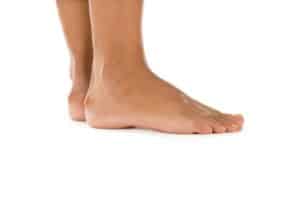
What to Expect After Haglund’s Deformity Surgery
When Haglund’s deformity proves to be resistant to all non-surgical remedies, such as changing footwear, anti-inflammatory drugs, and physiotherapy, surgical
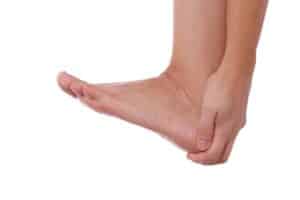
Can Haglund’s Deformity Recur After Surgery? Understanding the Possibilities
When it comes to some of the most stubborn health issues, foot conditions are at the top of the list.
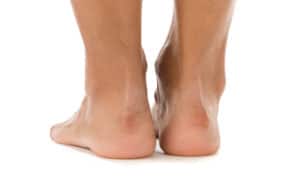
Haglund’s Deformity Post Surgery: A Comprehensive Guide
Each surgical procedure has a unique recovery period, no matter how minimally invasive it is. There will be certain things
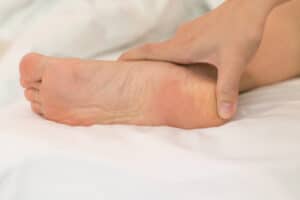
What Are the Main Haglund’s Deformity Surgery Risks? An In-Depth Overview
As with any other medical procedure, Haglund’s deformity surgery comes with its own set of risks and potential complications. Before

Returning to Running After Haglund’s Deformity Surgery – A Guided Journal
When can you return to running after Haglund’s deformity surgery? Physical therapy and a smooth recovery process impact how soon
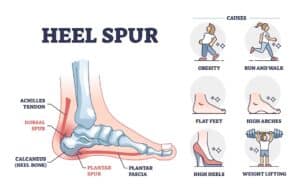
Dorsal Heel Spur Surgery – Procedure, Recovery, and What to Expect
Dorsal heel spur surgery is a procedure that alleviates irritating symptoms caused by heel spurs that develop on the back

Understanding the Costs of Laser Corn Removal
Alleviating discomfort and nagging pain caused by corns on the patient’s feet has never been easier to do. Removing painful
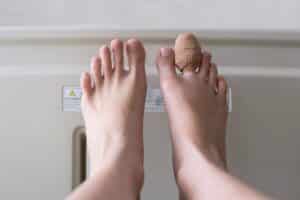
Minimally Invasive Hammertoe Surgery Cost – An Informative Guide
Do you need pain relief from a bent toe joint? Fortunately for many patients, there is a minimally invasive surgery